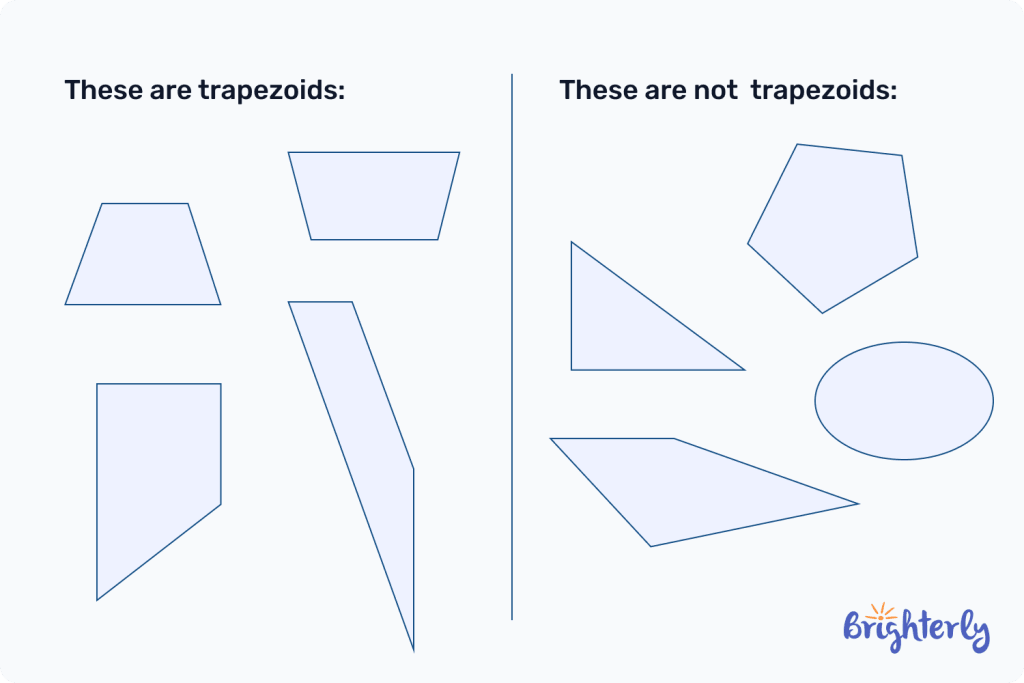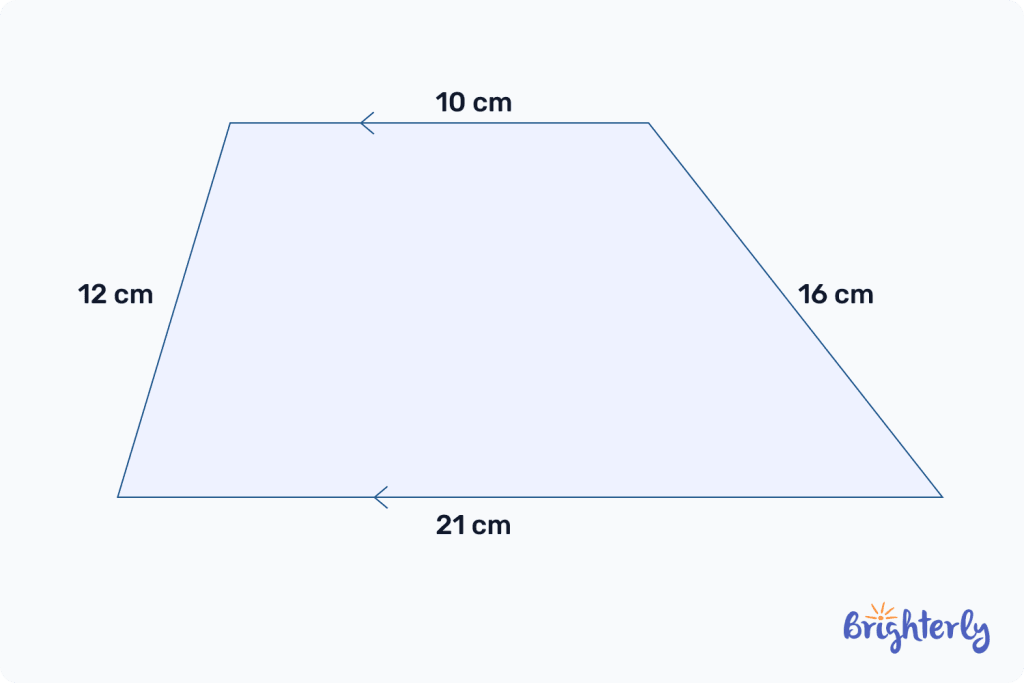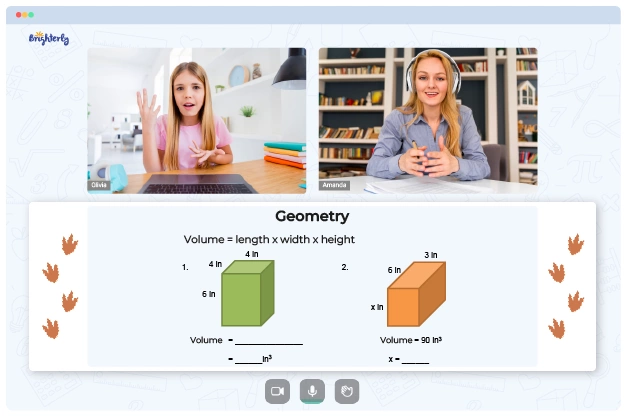Trapezoid – Definition, Types, Properties, Examples, FAQs
reviewed by Jo-ann Caballes
Updated on July 15, 2025
Looking to improve your math knowledge? Brighterly is here to help!
As part of our knowledge base series on shapes, we’re exploring trapezoids shapes today.
In this article, we’ll share the trapezoid meaning, the properties of trapezoids, different types of trapezoids, solved math problems and trapezoid practice problems.
What is trapezoid?
A trapezoid is a type of quadrilateral. The definition of a trapezoid is a 2D closed shape with four sides and one pair of parallel sides, known as the base. The non-parallel sides are known as the legs or laterals. All trapezoid interior angles add up to 360°.

Trapezoid: exclusive & inclusive definition
There are two definitions of a trapezoid, exclusive and inclusive.
Exclusive definition
The exclusive definition of a trapezoid says they have no opposite parallel pairs.
Inclusive definition
The inclusive definition of a trapezoid says it has at least one pair of opposite parallel sides. By this definition, parallelograms can be classed as trapezoids.
This article will be using the inclusive definition of trapezoids shapes.
Types of trapezoid
There are three different types of trapezoids:
- Right trapezoid
- Isosceles trapezoid
- Scalene trapezoid
Right trapezoid
A right trapezoid has one leg perpendicular to both its bases. This creates two right angles, one at each of its bases, so it’s also known as a right-angled trapezoid.

Isosceles trapezoid
Isosceles trapezoids shapes have parallel top and bottom lines (bases). The other two lines are equal length, but aren’t parallel. This means the base angles and diagonals of an isosceles trapezoid are equal.

Scalene trapezoid
A scalene trapezoid has sides that are different lengths and non-congruent. This means each of its four angles is different. It also has a pair of parallel sides and a pair of non-parallel sides. It’s also known as a non-isosceles trapezoid.

Median of trapezoid
The median of a trapezoid is equal to half the sum of both its bases and parallel to them.

Properties of a trapezoid
The properties of trapezoids make them different from other types of quadrilaterals. These properties are:
- The top and bottom line (bases) of trapezoids shapes are parallel.
- An isosceles trapezoid has opposite sides of the same length.
- The median of trapezoids is parallel to both its bases.
- If both opposite sides are parallel, a trapezoid can also be a parallelogram.
- A square can also be a trapezoid under the inclusive definition.
- A rectangle can also be a trapezoid under the inclusive definition.
- All trapezoid interior angles add up to 360°, and the angles on the same side add up to 180°.
Trapezoid formula
There are two trapezoid formulas you can use to calculate the area and perimeter of a trapezoid.
Area of trapezoid
This formula calculates the area of a trapezoid:
Area= ½ (A+B)h
(A = base1, B = base2, h = height).

Perimeter of trapezoid
To calculate the perimeter of a trapezoid, simply add all of its side lengths together.
If you don’t know all the side lengths, you can use the Pythagorean theorem to calculate them.

Solved math tasks: examples
Here, we’ve included some solved trapezoid practice problems so you can improve your learning.
Solved math task 1
What is the perimeter of this trapezoid?

Answer:
| 84cm |
Perimeter = a + b + c + d
Perimeter = 15cm + 35cm + 14cm + 20cm = 84cm
Solved math task 2
What is the area of this trapezoid?

Answer:
| 260cm2. |
Area= ½ of (a+b)h
Area= ½ of (20+32)10
Area= ½ of 5210
Trapezoid: Practice math problems
Trapezoid worksheets
Brighterly offers a range of math worksheets, including trapezoid problems to solve, to help you put your learning into practice:







